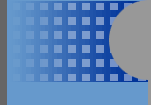Yoko Ono
“Odyssey of a Cockroach”
Moscow, TSUM
May 31 – June 24, 2007
4th floor, 2, Petrovka, Moscow
Co-organizer
TSUM
Supported by:
“Mirax Group” and “Red October” Project
The exhibition of Yoko Ono “Odyssey of a Cockroach” will be held from May 31 to June 24, 2007 in Moscow, in
the premises of TSUM new venue (4th floor) located by the address Petrovka street, b. 2.
The exhibition jointly organized by the Foundation “Russian century”, Moscow Biennale Art Foundation and TSUM
is shown within the framework of the “Special guests” program of the 2nd Moscow Biennale of Contemporary Art.
«Odyssey of cockroach» is a traveling exhibition project. It was first displayed in October 2003 in New York at the Soho
gallery of Jeffrey Deitch, then it toured to the Institute of Contemporary Arts, London (February-March 2004).
In May-June 2007 Moscow will become the third city after New York and London to present to wide audience the major Yoko
Ono’s project which became world famous during the tour.
The exhibition is curated by Joseph Backstein (commissioner of Moscow Biennale, director of the Institute of Contemporary
Art, Moscow), and Philip Dodd (former director of the Institute of Contemporary Arts, London and Director, Creative City Networks).
”Odyssey of a Cockroach” is an installation that takes the form of theatrical mise-en-scene – the
experience of a cockroach as it makes its way through the city of New York. But more than that, it is, to quote the New York
Time Out review “a phantasmagorical passage through time – specifically the last century”.
In “Odyssey of a Cockroach”, walls are covered with billboard-size colour photographs of gritty urban scenes
– a bloody crime scene, a bombed-out building, a starving child. Big towering objects depict similarly unsettling subjects
– a six foot rubbish bin overflowing with plaster body casts, an enormous replica of human rat trap, and hundreds and
hundreds of old discarded shoes, the owners long forgotten.
On a gigantic desk papered with maps of the world are index cards printed with a quotation, attributed to Hermann Goering
at the Nuremberg Trials: “But, after all, it is the leaders of the country who determine the policy and it is always
a simple matter to drag people along, whether it is a democracy, or a fascist dictatorship, or a parliament, or a communist
dictatorship”, – said the Reich-Marshall. – “Voice or no voice, the people can always bebrought to
the bidding of the leaders. That is easy. All you have to do is tell them they are being attacked and then denounce the peacemakers
for lack of patriotism and exposing the country to danger. It works the same in any country".
Describing the genesis of the project, Yoko Ono says: “We desired women to look as thin as the people we starved.
We created a break-down of our own families, severing ourselves from other family members, mentally, emotionally and sometimes
physically. We started to abuse our children, ignoring them and allowing them to be taken away from us. Children walked out
on us as well. Fleeting peacefulness was enjoyed with fear and doubt. Love was temporal and met with guarded cynicism. In
fact, we became the starved: both mentally and emotionally”.
Yoko Ono, an artist and composer, was born in 1933 in Tokyo, Japan. She has been credited with being one of the originators
of Conceptual Art, with works created in 1960, 1961 and 1962, which are language based, and use the idea of instructions and
participation as well as license and performance structures. All the time she called these works “Insound” and
“Instructure”. These ideas were a strong influence in the formation of Fluxus in 1961. Her actions and sound pieces
of the early 1960-s laid the groundwork for major developments in music and performance art of the later part of the XX century.
“Yes” Yoko Ono, a major retrospective organized by Japanese society of New York in 2000, was displayed in seven
museum of North America, shown at the Samsung Museum in Seoul. Then it toured by five museums of Japan starting from Mito
Art Tower.
Yoko Ono was represented in Venice Biennale 2003. Her one-woman exhibitions and installations were presented at the Museum
Kampa, Prague, and Detroit Institute of the Arts. She was also in major group shows all over the world: in Tokyo at the Mori
Art Center, Liverpool at Tate Liverpool, Montreal at the Museum of Modern Art, Baltimore at the Baltimore Museum, etc.
Organizer of Yoko Ono exhibition in Moscow – “Russian century” Foundation
The foundation for
the culture promotion “Russian century” is a newly established culture support institution. Last year the foundation
participated in several culture projections: the foundation supports MKHAT School-Studio, Theatre Company by Eugene Mironov,
Pushkin Museum of Fine Arts (the exhibition of Maximilian Voloshin’s water-colours donated to the Museum by Mikhail
Baryshnikov, and the exhibition “Meeting with Modigliani” were held under the Foundation aegis. The Foundation
made possible the main project exhibition of the 2nd Moscow Biennale 2007 at the Federation Tower.
Co-organizer of Yoko Ono exhibition in Moscow – TSUM
Yoko Ono’s exhibition will be shown at TSUM.
In spring 2007 TSUM became the venue which housed 2nd Moscow Biennale of Contemporary Art. Today TSUM is the only department
store in Russia which completely complies with the best world analogies. The creative works of actual artists and modern collections
of the most influential fashion trade marks create special space charged with the energy of contemporaneity. The 2nd Moscow
Biennale at TSUM is an event underlining the identity of fashion and contemporary art. The exhibition of Yoko Ono will be
held only here, at the TSUM.

